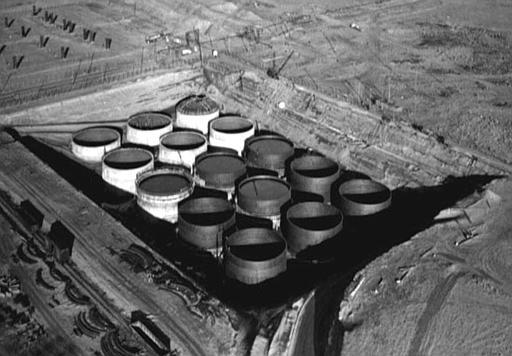LATimes | Walter Tamosaitis, once a top engineer in the nation's nuclear weapons cleanup program, has been relegated to a basement storage room equipped with cardboard-box and plywood furniture with nothing to do for the last year.
Tamosaitis' bosses sent him there when he persisted in raising concerns about risks at the Energy Department's project to deal with millions of gallons of radioactive waste near Hanford, Wash., including the potential for hydrogen gas explosions.
"Walt is killing us," said Frank Russo, Bechtel Corp.'s top manager at the project, in an email to Tamosaitis' boss urging that the engineer be brought under control.
Now, an independent government watchdog agency, the Defense Nuclear Facilities Safety Board, has backed up Tamosaitis and issued a rebuke to Energy Secretary Steven Chu, concluding that the safety culture at the $12.3-billion project is "flawed" and that significant risks exist in the plant's design.
The conclusion came after a nearly yearlong investigation, which took testimony from 45 witnesses and reviewed 30,000 documents. It confirmed that Tamosaitis had been "abruptly removed from the project" when he raised technical questions about its design, and that the actions against him had frightened other engineers.
"The board finds that expression of technical dissent affecting safety … were discouraged, if not opposed or rejected without review," safety board Chairman Peter Winokur wrote to Chu on June 9. "As of the writing of this finding, Dr. Tamosaitis sits in a basement cubicle in Richland with no meaningful work."
In a five-page response Friday, the Energy Department said it was "committed to continuous improvement and teamwork."
"We believe the plant can operate safely," Deputy Energy Secretary Daniel Poneman said in an interview. "I am not going to kid you, it is challenging technically."
Hanford is the nation's most contaminated piece of property, housing 56 million gallons of highly radioactive sludge in underground tanks that pose a long-term risk of leaking into the Columbia River.
The Energy Department wants to embed the waste into solid glass and ship it to a future dump, but so far not a single gallon has been treated. The project is more than 20 years behind the original schedule, and the cost has more than tripled.
"It's pitiful," said Tamosaitis, who was manager of research and technology for San Francisco-based URS Corp., a prime subcontractor to Bechtel Corp. in building the waste treatment plant.
Until he was removed from his job, Tamosaitis, 63, managed a technical staff of as many as 30 in-house scientists and engineers, and an external staff that numbered in the hundreds. He holds a doctorate in systems engineering. He spent 20 years working for DuPont Corp., running chemical plants all over the country, and then another 20 years in the nuclear cleanup industry.
Tamosaitis sent an email last year to a small circle of the top engineering experts in chemical mixing technology, raising concerns over the decision years ago to use an untested and potentially risky technology in the Hanford design.
The processing of the waste at Hanford requires a large number of mixing tanks up to 400,000 gallons in capacity where sludges, salts and liquids are separated into high-level and low-level radioactivity steams, using chemical processes and filters. More than two dozen key tanks at Hanford would use "pulse jet mixers," a system that engineers compare to turkey basters — liquid is sucked into a tube and then squirted out.
The system was supposed to be cheaper than mechanical agitators and less subject to failure, a crucial feature once the tanks are in operation and too radioactive to service. But no U.S. nuclear plant uses the technology, and Tamosaitis said there was significant doubt whether they could adequately keep the tanks mixed.
If tanks are not kept properly mixed, plutonium solids could settle at the bottom and go critical, he said. A poorly mixed tank could also result in large burps of explosive hydrogen gas. And finally, the solids could plug up pipes in the plant.







